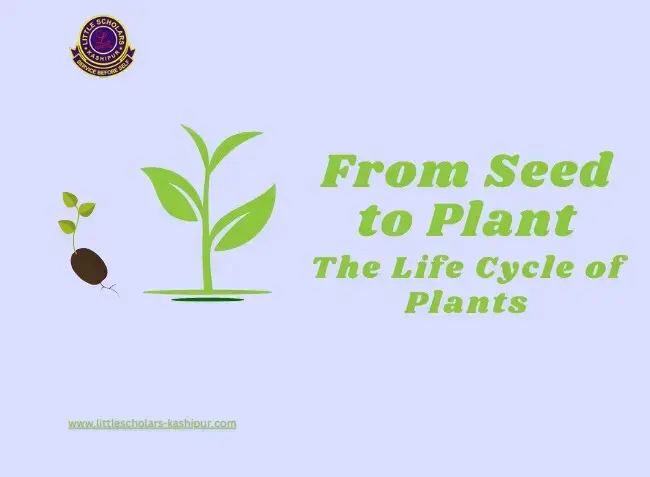Hello, budding botanists and curious minds! Today, we're going to dig deep into the earthy world of plants and discover the amazing journey they take from a tiny seed to a full-grown plant. So, grab your gardening gloves, and let's get planting some knowledge!
What's in a Seed?
Think of a seed as a baby plant that's waiting for the right conditions to grow. Inside each seed is a tiny plant embryo with a food store to keep it fed until it's ready to start growing. Seeds come in all shapes and sizes, from the tiny seeds of orchids to the large and familiar acorn. But no matter the size, every seed has the potential to become a new plant.
Step 1: Germination - The Awakening
Our journey begins with germination, the process where a seed wakes up and starts to grow. But what does it need to kickstart this process? Three main things: water, the right temperature, and sometimes light. When a seed absorbs water, it swells up and breaks open its outer coat. This is the first step in saying, "Hello, world!"
Inside, the embryo's cells start to get busy. The young root, or radicle, pushes down into the soil to anchor the plant and start absorbing water and nutrients. Meanwhile, the shoot, or plumule, heads upward toward the light. This is the seedling's first big stretch!
Step 2: Seedling - The Baby Plant
Once the seedling emerges from the soil, it's on a mission to grow. The first leaves, often called cotyledons or 'seed leaves,' are usually different in shape from the true leaves that will come later. These first leaves are crucial as they start the process of photosynthesis – turning sunlight into food. Think of them as the plant's first kitchen, cooking up energy to grow.
As the seedling grows, it develops more leaves and a stronger root system. Each new leaf helps capture more light and create more food, while the roots reach further into the soil for water and nutrients. It's a tough world out there for a little seedling, so this stage is all about growing strong and sturdy.
Step 3: Vegetative Growth - The Teenage Plant
Once our plant has a good set of leaves and roots, it enters the vegetative growth stage. This is like plant adolescence, where it grows quickly and focuses on getting bigger and stronger. The plant will grow new leaves, stems, and maybe branches, depending on what type of plant it is. This stage is all about becoming the best, biggest plant it can be before it's ready to reproduce.
During this time, the plant continues to use photosynthesis to make food and grow. It's a busy time for the plant, and if it's a plant we grow for food, like lettuce or carrots, this might be when we harvest it.
Step 4: Flowering - The Adult Plant
Now comes the exciting part – flowering! This is when our plant is ready to reproduce and make seeds of its own. The plant develops special structures called flowers, which are like fancy billboards advertising to pollinators like bees, butterflies, and birds. "Come visit me," they say, "and help me make seeds!"
Flowers come in all sorts of shapes, sizes, and colors, each adapted to attract a specific type of pollinator. Once the pollinators visit and transfer pollen from one flower to another, the magic of reproduction can happen.
Exploring Opportunities for Learning: The Importance of Technology in Education: Read more
Step 5: Pollination and Fertilization - Making Seeds
Pollination is when pollen (plant sperm) is transferred to the part of the flower where eggs are waiting to be fertilized. When fertilization happens, a new seed is made. This is like the plant's version of having a baby!
Step 6: Seed and Fruit Development - The Plant's Legacy
After fertilization, the flower's ovary starts to transform into a fruit or seedpod, and the seeds begin to develop inside. This fruit or seedpod protects the seeds and can also help spread them around. Some fruits are tasty and get eaten by animals who then spread the seeds far away. Others might hitch a ride on an animal's fur or float away on the wind.
Step 7: Dispersal - Spreading the Love
The final step in our plant's life cycle is dispersal, where the seeds spread out and find new places to grow. This can happen in many ways: through wind, water, animals, or even just falling to the ground. Wherever they end up, if the conditions are right, these seeds will start the whole process again, growing into new plants.
Our Solar System: A Journey Through Space: Read more
The Circle of Plant Life
And there you have it! The life cycle of a plant is a beautiful, continuous journey. From a tiny, sleepy seed to a blooming plant producing seeds of its own, it's a story of growth, change, and renewal. Each stage is crucial and has its unique beauty and purpose.
So next time you're outside, take a closer look at the plants around you. Whether they're tiny seedlings or towering trees, remember the incredible journey they've taken to be there. And who knows? Maybe you'll be inspired to plant some seeds of your own and watch the wonder of plant life unfold right before your eyes.
Happy planting and exploring, young botanists! The world of plants is full of wonders waiting for you to discover.




